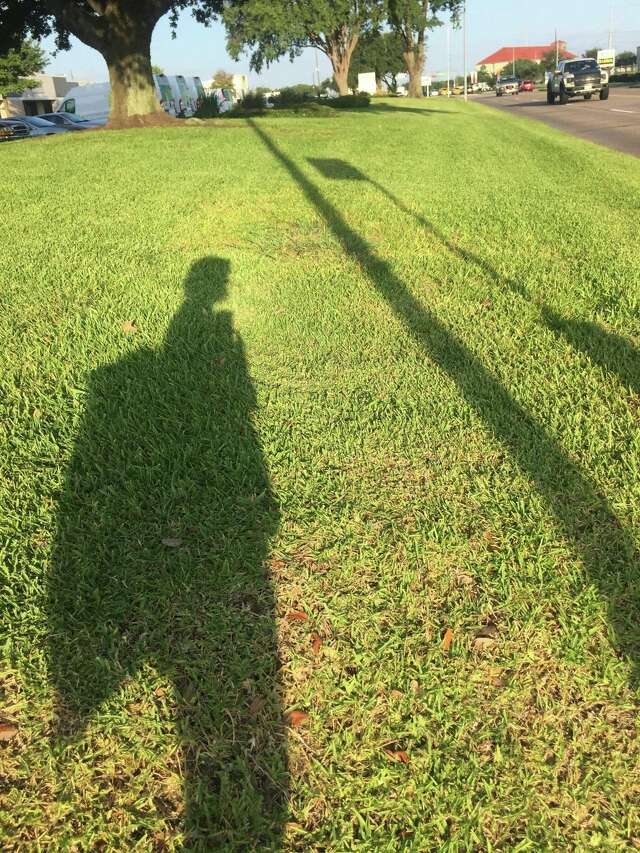Essay: I tried, and failed, to get around Houston on Metro
I was warned. “Houston is a car city,” the guidebook I purchased to help prepare me for my visit to Texas stated. “You’ll definitely have to drive there,” my U.S.-experienced German friends stressed. For the Americans around me the question was not if I would drive but what: “Is it going to be a SUV?”
But as someone who has never owned a car, succeeds in getting to work every day even with Berlin’s not too trustworthy public system and who enjoys exploring foreign cities by buses and trains, I decided to give it a try. I would move around Houston by public transport.
Metro’s website encouraged me: Shiny pictures show a whole fleet of buses — some of them even carrying bikes on front racks. I was about to discover Houston’s hidden eco-conscious side.
My very first ride took me from the George Bush Intercontinental Airport to my place in Westchase. A bus, the Metro rail and another bus were involved. The timing was impressive: I did not have to wait much for each of them to arrive. But when I got off the last bus, almost two hours had passed since I had left the airport. And I still had to walk for another 20 minutes (in a mostly sidewalk-free neighborhood) until I finally reached my apartment. I learned my first lesson: It takes time to get around in Houston. A lot of time.
Never mind, I told myself, every bus ride resembles a little journey around the world. I passed by the foodie plazas of Chinatown, continued south to black majority neighborhoods, tasted some Mexican flavor while rumbling through East End and wondered what the opulent homes in River Oaks look like from the inside. What could be a more comfortable way of finding out about the diversity Houston praises itself for than from a window seat on a bus?
Yet, this diversity was not reflected on the bus. My fellow passengers were brown and black people. I hardly ever saw a white man or woman entering the bus.
Sometimes I was the only passenger. I wondered why in this populous city so many local buses were driving around without any or just a few customers — even those scheduled every 30 minutes.
I met Houston’s chief sustainability officer at an environmental summit and asked her about it. Lara Cottingham’s answer sounded familiar: “Houston is a car city.”
An elderly woman sitting next to me at the meeting had another explanation: “People are scared of using public transport. They fear for their safety.”
This astounded me. To me, the bus appeared to be a remarkably peaceful place. One day I was offered spiritual blessings by another rider, the other day I was offered chips. Actually, the buses in Houston are a good mood on wheels. That’s mainly because of the bus drivers.
As I headed to work they greeted me with a cheerful “Good morning! How are you?” One refused to take the second dollar when I didn’t have the required exact change of $1.25 for a ticket. And they did not let me disembark without kindly telling me to “Have a good one.”
I have never experienced such an abundance of friendliness in Berlin. In Germany’s capital, grouchiness seems to be a recruitment criterion for bus drivers. One they are proud of.
But to be honest, it was not only the bus drivers’ kindness that made me feel true joy every time I entered the bus. It was also because I was relieved to finally start or continue the ride after a long walk and wait in the sun. It took me one and a half hours to get from my place in Westchase to the Houston Chronicle’s offices [at 610 and 59]. Google Maps suggests a 12-minute ride. By car.
I got assignments in parts of the city without any bus routes. So I traveled via Uber. Which is comfortable, but also pricey in the long run. That was when I admitted to myself that I might need a car. My attempt to get around in Houston by public transportation was about to fail.
I asked the — likewise friendly — Uber drivers about the driving behavior of Houston’s residents. “Aggressive,” said a native Houstonian with a degree in psychology. “Impatient,” replied a student from New York. While sitting on the back seat, entering freeways and exiting interstates, I listened to their horror stories about the struggle to survive driving on the streets of Houston. But I also came to understand that Houston would only reveal its appeal and its attractions to me if I would finally take the seat behind the wheel.
A week after I arrived in Houston, I rented a car. No more long walks, no more sunburn while waiting for the bus to arrive, no more wasted time. I feel like a part of car city now. I do miss the bus drivers, though, and their cool and kind way of saying: “Have a good one.”
Kormbaki is an exchange journalist from Berlin, Germany, where she is a political and immigration reporter for RND. She is in Houston as an Arthur F. Burns Fellow of the International Center for Journalists.




You must be signed in to comment
is currently signed in
Sign In